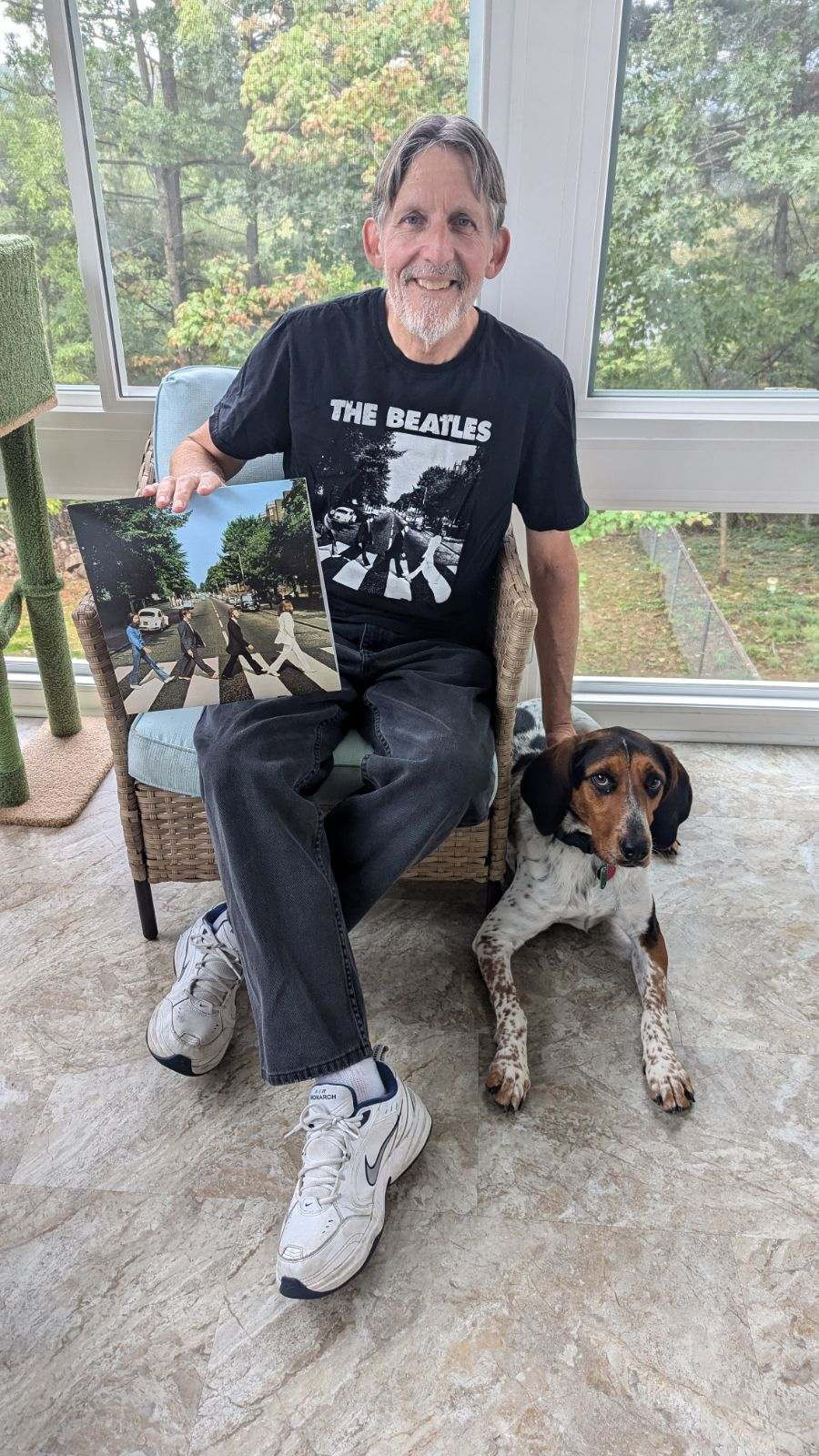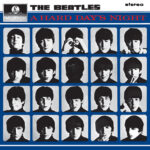It’s remarkable to think that 55 years have passed since The Beatles gifted the world with “Abbey Road.” Released in the autumn of 1969, this album, often considered their final studio recording, has solidified its place as one of the most celebrated rock albums of the late 1960s and in music history.
“Abbey Road” graced record store shelves on two dates: September 26, 1969, in the United Kingdom, and a week later, on October 1st, in the United States. To commemorate the 55th anniversary of this iconic Beatles album, I’m delving into the enduring appeal of “Abbey Road,” examining the historical significance of its individual songs, and presenting my personal countdown of the 8 best full-length tracks featured on this masterpiece.
Let me clarify, this isn’t a formal review of the Fab Four’s “Abbey Road.” For those seeking critical analyses of the 1969 LP, numerous online resources offer diverse perspectives on “Abbey Road.” However, its widespread acclaim is undeniable. Rolling Stone magazine ranks this Beatles masterpiece at #5 on their “500 Greatest Albums of All Time” list, and in 2024, music historians consistently laud “Abbey Road” as a phenomenal collection from the legendary band.
“Abbey Road” boasts a rich tapestry of 17 songs, commencing with 8 complete tracks and culminating in a 16-minute medley of 9 shorter compositions. My exploration will categorize these songs into two sections: a breakdown of the 9-song medley and a countdown ranking my top 8 full-length tracks from “Abbey Road.”
Unpacking the Abbey Road Medley: A Suite of Genius
The 9 songs that form the Abbey Road medley are:
- You Never Give Me Your Money
- Sun King
- Mean Mr. Mustard
- Polythene Pam
- She Came in Through the Bathroom Window
- Golden Slumbers
- Carry That Weight
- The End
- Her Majesty
Upon recent revisits to this 16-minute musical journey, I’m consistently struck by the sheer brilliance of what’s often dubbed “The Abbey Road Suite.” This medley, in my view, served as a crucial precursor to the progressive rock genre that surged in popularity in the early 1970s. It’s a sonic adventure that incorporates a diverse array of instruments, many of which were unconventional in the pop-rock landscape of 1969.
Key characteristics and fascinating aspects of this 9-song medley include:
- Fusion of Genres: Elements of classical and jazz music are seamlessly woven into the rock framework.
- Dynamic Tempo Shifts: Songs are characterized by frequent and dramatic changes in tempo, keeping the listener engaged.
- Lyrical Disconnection, Musical Cohesion: While the lyrical themes of the songs are largely unrelated, they are ingeniously linked by chord progressions and sound effects, creating a unified listening experience.
- Hidden Gem: The final track, “Her Majesty,” is a mere 14 seconds long and is famously considered an early example of a “hidden track” on an album.
My personal highlights within the medley are the seamless trio of “Golden Slumbers,” “Carry That Weight,” and “The End.” Having witnessed Paul McCartney perform these songs as the encore finale in two concerts over the past decade, their power to captivate a live audience is undeniable.

Ranking the Full-Length Beatles Songs on Abbey Road: My Top 8 Countdown
Now, let’s move on to the heart of the album – the 8 full-length tracks on “Abbey Road.” These are presented in their album order:
- Come Together
- Something
- Maxwell’s Silver Hammer
- Oh! Darling
- Octopus’s Garden
- I Want You (She’s So Heavy)
- Here Comes the Sun
- Because
My countdown will progress from what I consider the least impactful song to my absolute favorite Beatles track on “Abbey Road.”
8. Maxwell’s Silver Hammer
- Primary Writer: Paul McCartney
- Credited To: Lennon/McCartney
- Lead Vocals: Paul McCartney
“Maxwell’s Silver Hammer” is a curious inclusion. It possesses an undeniably upbeat and catchy melody, sounding deceptively cheerful. However, beneath the surface lies Paul McCartney’s foray into “death pop.” The song narrates the dark tale of Maxwell Edison, a student who commits murders with a hammer. Adding a touch of the bizarre, Ringo Starr contributes to the song’s unique sound by playing an anvil.
7. Octopus’s Garden
- Writer & Lead Vocals: Ringo Starr
This whimsical and lighthearted track marks only the second song penned and sung by Beatles drummer Ringo Starr to be featured on one of their albums. “Octopus’s Garden” has a distinct country flavor, enhanced by Starr’s self-created “bubbling sound effects.” Its charm extends beyond music, as Jim Henson’s Muppets covered the song in several Sesame Street videos. Starr even published a children’s book inspired by the song in 2013, further cementing its place in popular culture.
6. Because
- Primary Writer: John Lennon
- Credited To: Lennon/McCartney
- Lead Vocals: John Lennon
According to The Beatles Bible, John Lennon conceived “Because” after hearing Yoko Ono play Beethoven’s Moonlight Sonata on the piano. This inspiration translates into a dreamy and ethereal track, featuring a harpsichord and Moog synthesizer. Perhaps most notably, “Because” showcases stunning three-part harmonies by George Harrison, Paul McCartney, and John Lennon, creating a rich vocal tapestry.
5. I Want You (She’s So Heavy)
- Primary Writer: John Lennon
- Credited To: Lennon/McCartney
- Lead Vocals: John Lennon
At nearly eight minutes in length, “I Want You (She’s So Heavy)” is an expansive and immersive piece. Penned by John Lennon as a passionate ode to Yoko Ono, it ventures into progressive rock territory, making it the most overtly psychedelic composition on “Abbey Road.” Billy Preston’s guest appearance on the organ adds another layer of musical depth. The song is a sonic marvel, blending multi-tracked guitars, a driving bassline, and the futuristic sounds of a Moog synthesizer to create a truly captivating experience.
4. Oh! Darling
- Primary Writer: Paul McCartney
- Credited To: Lennon/McCartney
- Lead Vocals: Paul McCartney
“Oh! Darling” sees The Beatles tipping their hats to the sounds of 1950s rock ‘n’ roll, R&B, and doo-wop. This throwback track boasts an instantly memorable melody. The vocal harmonies are a standout feature, with Lennon, Harrison, and McCartney delivering exceptional three-part doo-wop backing vocals that perfectly complement Paul McCartney’s raw and powerful lead vocals, often described as larynx-shredding in their intensity.
3. Come Together
- Primary Writer: John Lennon
- Credited To: Lennon/McCartney
- Lead Vocals: John Lennon
“Come Together” is a true rock anthem. Released as a double-A-sided single with “Something” on October 6, 1969, it soared to #1 on the Billboard Hot 100 chart. This hard-driving blues-rock track is propelled by Paul McCartney’s exceptional and instantly recognizable melodic bass line. While John Lennon’s sardonic and somewhat nonsensical lyrics remain open to interpretation, the line “Here comes old flat-top” is a direct nod to Chuck Berry’s 1956 hit “You Can’t Catch Me.” Ringo Starr himself declared in 2021 that “Come Together” is his all-time favorite Beatles song, a testament to its enduring power.
2. Something
- Writer & Lead Vocals: George Harrison
Also released as a double-A-side single with “Come Together,” “Something” marks a significant milestone as the only Beatles #1 single not primarily written by Lennon/McCartney. This George Harrison-penned love ballad, inspired by his first wife Pattie Boyd, is a masterpiece of songwriting. The opening line was borrowed from James Taylor’s “Something in the Way She Moves,” another artist on Apple Records. Harrison’s guitar work throughout the song is nothing short of exquisite. “Something” received the Ivor Novello Award for “Best Song Musically and Lyrically” in 1969, ranks as the 17th-most recorded song of the 20th century, and holds the #110 spot on Rolling Stone Magazine’s “500 Greatest Songs of All Time.”
1. Here Comes the Sun
- Writer & Lead Vocals: George Harrison
For me, “Here Comes the Sun” reigns supreme as the best song on “Abbey Road.” I even place this uplifting and melodic acoustic track as my 5th favorite Beatles song overall. Alongside “Something,” “Here Comes the Sun” solidified George Harrison’s songwriting prowess, with many music historians now considering his contributions on par with Lennon & McCartney’s. Harrison wrote this beloved song while visiting his friend Eric Clapton in early 1969, seeking respite from Beatles’ internal tensions. The song’s inherent acoustic beauty is further enhanced by George Martin’s orchestral arrangement, featuring violas, cellos, piccolos, flutes, and clarinets, lending a classical touch to this cheerful pop gem. In the 21st century, “Here Comes the Sun” has become the most streamed Beatles song on Spotify and other online music platforms globally, resonating with listeners of all ages thanks to its universally positive and encouraging message.
Abbey Road: A Lasting Legacy
That concludes my musical reflections on the Beatles’ “Abbey Road” album on its 55th anniversary. I encourage you to share your own thoughts in the comments below, particularly regarding your personal favorite song on the album.
As music historians often note, the recording sessions for “Abbey Road” were fraught with tension, and the Beatles were teetering on the brink of dissolution. Little did the world know that “Abbey Road” would become the swan song for arguably the greatest rock band of the 20th century.
I unequivocally consider “Abbey Road” a masterpiece and one of the finest albums to emerge from the late 1960s. I’ll close with lyrics from the last song recorded collectively by all four Beatles and the final track of the Abbey Road medley, “The End”: Rock on!
“And in the end, the love you take, Is equal to the love you make.”


